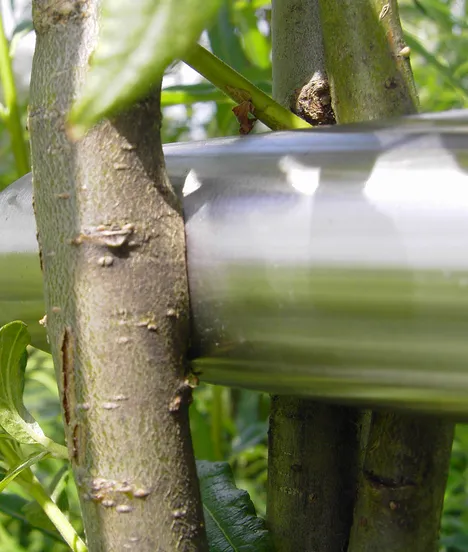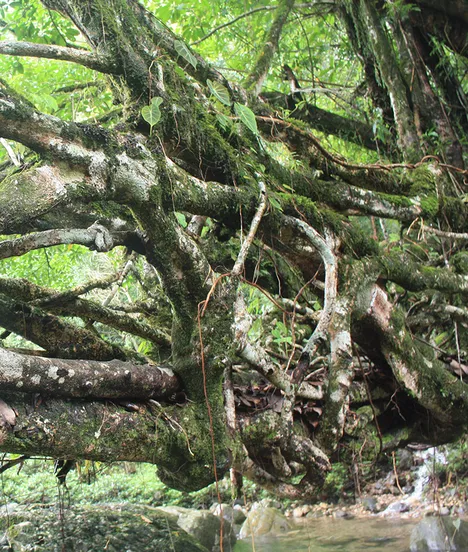

Baubotanik
The term "Baubotanik" is defined as a fundamental approach to engineering with living plants: using the interaction of technical joints and botanical growth to form building techniques. By joining living and nonliving structural details, a compound structure is formed. Single plants merge into a new and larger organism and technical elements are included into the plant structure. For this horticultural building technique, the term „Baubotanik“ was established in 2007 at the Institute of Theory of Architecture and Design of the University of Stuttgart. Since March 2017 the field of research is based at the Professorship for Green Technologies in Landscape Architecture and is being developed in the scope of a broad, interdisciplinary network.
Using trees and their growing process to create living plant constructions is an approach that plays a central role in the history of the European culture of gardening. It can be found in many different cultural contexts and has its own tradition of visionary designs. Both the living bridges grown by the Khasi people in North-East India and the Tanzlinden ("dancing lime") trees in Germany serve as important historic references. The impressive dimensions and stability of the living bridges are provided by a vernacular construction method, while the horticultural concept of green spaces with sensual qualities underpins Tanzlinden projects.